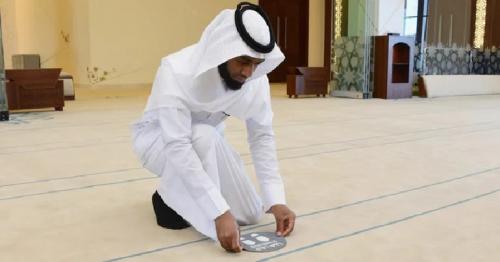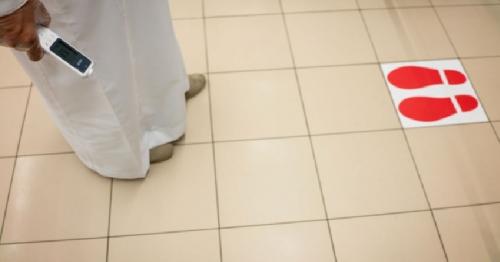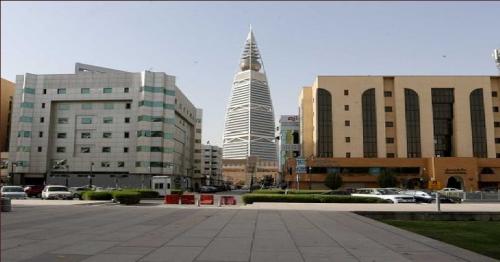The Historical Framework Of The Currency Of Saudi Arabia
By announcing this new monetary regulation, every one was bound to use the Saudi Riyal and stop dealings in other currencies. Consequently, in 1348H., (1930G.), it was necessary to have the Riyal and its subdivisions re-minted in all denominations and previous specifications with the exception of the date of mint (1348H) and put into circulation in conformity with exchange rate of the Hijazi-Najdi Qirshes, which were re-minted also in all denominations and previous specifications with the exception of the date of mint (1348H).
After full unification of the country, King Abdulaziz, by the Royal Decree No. (2716) dated 7/5/1345H., (22/9/1932G.), gave his order to change the name of the country from (Kingdom of Al-Hijaz, Najd & Dependencies) to (Kingdom of Saudi Arabia). In addition, it was decided to use the title of (King of the Kingdom of Saudi Arabia) instead of (King of Al-Hijaz, Najd & Dependencies). Nevertheless, the first Saudi currency bearing the new name of the country appeared in1354H. (1935G.), when the Silver Riyal, the Half Riyal and the Quarter Riyal, were put in circulation.
In comparison with the older Riyal, the new one was distinguished by its smaller size and lighter weight of (11.65) gm., ie; half of the weight of older Riyal. The new Riyal was also distinguished by higher fineness of (0.916). Thus, specifications of this new Riyal almost matched those of the Indian Rupee, the most commonly used amongst foreign currencies at that time.
The design of the new Riyal is similar to the old one in terms of ornament, shape and distribution of inscriptions. Nevertheless, the center of front of the new Riyal shows the full name of the King (Abdulaziz Bin Abdulrahman Al-Saud) surrounded by a circle to separate inscriptions on the margins presenting the King’s new title (King of the Kingdom of Saudi Arabia) and beneath it is the Emblem of the State. However, the back of this new Riyal is identical to the back of the older one with the exception of the year of minting (1354H).
The One Qirsh, Half Qirsh and Quarter Qirsh copper coins did not bear the new name of the State until in 1356H., (1937G.) when they were minted in the design of the older Qirsh and its subdivisions. Nevertheless, the front of the coin shows the name & title of the King (Abdulaziz Al-Saud/ King of the Kingdom of Saudi Arabia) written in the form of a circle. The back of the coin shows no change except in the year of minting (1356H.) appearing down in the lower part of the coin.
Because of accelerating economic development by the Government and increasing needs of the local market for Saudi currency, which was then considered as the principal legal tender throughout the country, for thirteen years in a row, big quantities of the Silver Riyal, and the Qirsh and their subdivisions were repeatedly minted. Nonetheless, the original dates of minting (1354H) for the Silver Riyal & subdivisions and (1356H) for the copper nickel Qirsh & subdivisions remained unchanged until 1367H., (1948G) when the date of minting of the Silver Riyal underwent changes as the currency was struck in different years by various minting houses in London, Mexico, Philadelphia and Bombay.
However, all these efforts did not prevent the value of the Silver Riyal to go down from (22) to (20) Qirshs. This was because after the unification of the country and the focus on minting the Saudi Silver Riyal to meet official obligations and satisfy local demand, money-exchangers stored smaller denominations of the Copper nickel coins causing sever shortages in the One Qirsh coin and its subdivisions. To solve the problem and combat monopoly by money-exchangers, the State in 1465H., (1946G) counterstamped the figure (65) on the center of the front of all coins, minted before or after the unification of the country, which were in circulation at that time. Thus, the State managed to restore monetary balance to the markets and at the same time maintain the value of the Silver Riyal. These marked coins remained in circulation until early in the reign of King Saud Bin Abdulaziz.
In 1367H., (1948G) the One Silver Riyal, excluding subdivisions, was struck and put into circulation in its former design with the exception of the date of minting (1367H) inscribed on the back of the previous mint. This coin was re-minted in 1370H., (1951G), again excluding subdivisions. In the same year (1370H) and for the first time in the Saudi Era, the Gold Sovereign was minted. In terms of ornament and other descriptions, it came in a similar design to the Sliver Riyal. The only exception was in the date of mint and the value of the piece, which was inscribed in alphabets (One Saudi Arabian Guinea) on the upper margin of its back. This Gold Sovereign weighed (8grams), fineness (0.91666) and diameter (22mm). These specifications made it very close to the British Sovereign.
The Gold Sovereign was not put into circulation in the same year it was minted (1370H) compliant to an advice by Mr. Arthur N. Young, an Economic & Financial Advisor Heading an American delegation tasked with assisting in the development of the Kingdom’s financial system. This American delegation was asked to focus mainly on monetary matters beside economic matters in general. Mr. Young advised that the two and a half million pieces of Gold Sovereigns were to be kept in custody until the establishment of a competent institution capable to manage the financial affairs of the country. So, these Gold Sovereigns were held until the foundation of the Saudi Arabian Monetary Authority (SAMA) in 1372H (1952G).
The main concern for Saudi Arabia, after putting the Silver Saudi Riyal into circulation, was to maintain its value against the British Sovereign; the most important Gold currency at that time. Nevertheless, global economic stability was deeply shaken by the sharp international political shifts witnessed at that time. Silver prices collapsed due to the Great Depression. Moreover, between 1349H- 1352 H (1931-1933G) Britain and the USA abandoned the Gold Standard causing Gold prices to go up affecting exchange rate of the Silver Saudi Riyal against the English Gold Sovereign as applied by the Najdi-Hijazi monetary system.
As no local central monetary authority existed to control and regulate issuance of currency, coins were minted abroad and brought to the country in separate batches often in irregular periods of time. The situation aggravated when the drop in the exchange rate of the Silver Saudi Riyal created a big difference in its value as currency compared to the value of the mineral of silver in international market. This encouraged a bunch of money exchangers to smuggle huge amounts of the Silver Saudi Riyal across the borders, particularly to markets of India, which constituted a centre of attraction for smugglers.
King Abdulaziz realized the importance of a banking system to mange the gradually growing income of the State resulting from increases in oil exports. The envisaged institution could also curb and control any economic confusion caused by sharp fluctuations in prices of gold and silver, the backbone of the national currency.
From the very beginning, King Abdulaziz was very anxious to establish a national bank responsible for issuing Saudi currency, organizing its circulation into markets and maintaining its value. There were many offers presented to realize this project, but none of them was up to his expectations.
Early in 1371H., (1952G) following a great confusion in exchange and payment systems, King Abdulaziz approved an American Financial Mission to Saudi Arabia, headed by Mr. Arthur N. Young, an Economic & Financial Advisor. The Mission was to provide necessary advice on financial and economic matters and assist in the development of the Kingdom’s monetary system. Based on the reports of Mr. Young and after consultations with HR Prince Saud, who later became King Saud Bin Abdulaziz, to define the suggested institution, a name was selected for the desired financial institution in addition to specifying its functions and objectives. Consequently, the two Royal Decrees No (30/4/1/1046) and (30/4/1/1047) dated 25/7/1371H (20/4/1952G) were issued ordering the creation of the Saudi Arabian Monetary Authority (SAMA), and establishing its Statute to confirm its important role in the stabilization of the value of the Saudi currency, strengthening this currency domestically and abroad, supporting the Ministry of Finance by centralizing the reservation of Government revenues, providing necessary consultation to the Government on matters related to coinage and circulation of currency, supervising commercial banking system and money exchangers dealing in foreign exchange. Under the Statute, SAMA was not allowed to give advances to Government or private parties nor to issue paper currency. The Statute included other further items as stated by the two Royal Decrees.
The Saudi Arabian Monetary Authority (SAMA), the second oldest Central Bank in the Arab World, started its operations on14/1/1372H (4/10/1952G). The first task to be done was the completion of the Saudi Monetary System. Early in the month of Safar 1372H., the Gold Saudi Riyal was put into circulation. Exchange rate for this Riyal was defined at Gold Saudi Riyal 1 = Silver Saudi Riyals 40, ie; the equivalent of (10.90) dollars in agreement with the targeted exchange rate of the Saudi Riyals against the US Dollar (US$ 1 = Saudi Riyal 3.70). The Saudi Arabian Monetary Authority (SAMA) exerted huge efforts to maintain this rate and exercised its full competence, in collaboration with the banking system, to attain that target.
SAMA undertook to complete coinage of the Saudi Silver Riyals. In 1373H., (1953G) the Saudi Silver Riyal was coined marked by the name of King Abdulaziz, a clear indication that the Kingdom of Saudi Arabia has now possessed a competent institution to issue and maintain the value of its own national currency.
King Abdulaziz exerted extraordinary huge efforts to bring out the unique identity of his country and nation through the creation of an independent national currency as a symbol of sovereignty. The steps taken to realize this aim manifest the unparallel far sightedness, wisdom and cleverness of King Abdulaziz. He handled events and issues with patience and flexibility. The stages of the monetary reform followed closely the complicated circumstances surrounding the process of unifying country reflecting his skills in handling difficult political evolution from the beginning of his struggle in 1319H (1902G) until 1351H (1932G).
Despite the success he attained, King Abdulaziz ambitions were still much higher. He was aware that it was not realistic to continue using metal coins in the light of fast economic developments and mounting revenues of the State. Moreover, he noticed that Silver Saudi Riyals were heavy burdens for pilgrims to Makkah Al-Mokarramah during Hajj Seasons. Therefore, he took one of his most courageous decisions by which, as of 14/11/1372, H (25/7/1953G) SAMA started issuing what was known as the Pilgrims’ Receipts. The value of a Receipt was Ten Riyals. As a first batch, five million Receipts were printed in Arabic, Persian and English, Urdu, Turkish and Malayan languages. A Receipt would keep for the holder the value of Silver Saudi Riyals. This step was widely approved and accepted by pilgrims, merchants and citizens driving SAMA to re-issue it in addition to further two new denominations; the Five Riyals Pilgrims’ Receipt in 1373H (1954G) and the One Riyal Pilgrims’ Receipt in 1375H (1956G). SAMA found out that citizens and pilgrims were willing to replace metal coins by paper notes; a clear indication of their confidence in the Government and its ability to protect its paper currency, which is far more difficult than protecting coin currencies with their highly inherent value.
/ Source: sama





Comments